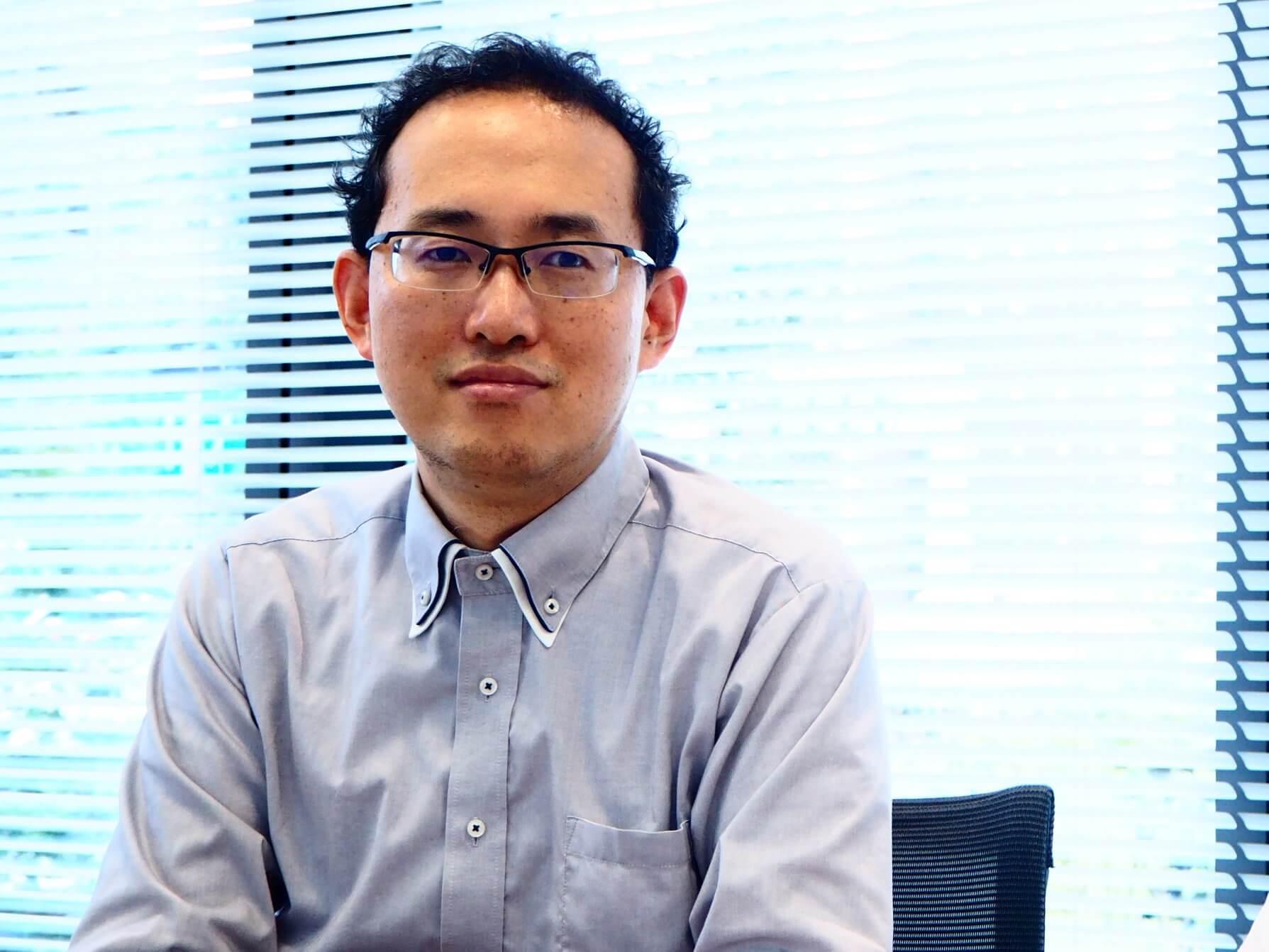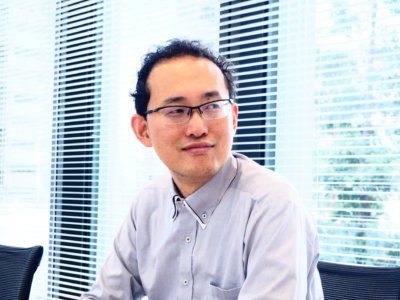Interviews
- Home >
- interviews >
- Collaborating across NCDs to achieve "societies in which even people affected by cancer can live with peace of mind"

-
2019.12.25
Collaborating across NCDs to achieve “societies in which even people affected by cancer can live with peace of mind”
Mr.Shinsuke AmanoChair, The Japan Federation of Cancer Patient Groups
CEO, Group Nexus Japan
Story Behind Our Current Activities
Aiming to “eliminate information gaps” and “create spaces for interaction”
First diagnosed with malignant lymphoma in 2000, at the age of 27, I experienced cancer treatments like chemotherapy, radiation therapy, and an autologous peripheral blood stem cell transplant (ABSCT) as a younger patient, later surviving two relapses.
Although the internet did already exist back then, it often seemed that not enough information was reaching the hands of patients. One day, an older man who was also undergoing treatment for malignant lymphoma told me that he had received an easy-to-understand pamphlet from his doctor. He gave me a copy, but it was all information that was easily available online. Hearing that this information was new to him was a shock, and witnessing this information gap made me keenly aware of the fact that adequate information needs to reach the hands of patients.
With very few patients around my age, I also experienced isolation during my fight against cancer, but I was then invited to attend the inaugural meeting of Group Nexus Japan. I experienced first-hand the strength and encouragement gleaned from simply listening to the stories of fellow patients, and I myself began wanting to get involved in the creation of spaces for interaction. These two goals—”to eliminate information gaps” and “to create spaces for interaction”—catalyzed our current activities.
Group Nexus Japan was launched by members who were initially exchanging information on an internet forum and who then got together in person. Meaning “bonds” or “connections,” the word “nexus” is a reference to Shibuya Nexus, the name of the room where we held our first offline meeting.
Although Group Nexus Japan is now run as an NPO, it originated as a group of volunteers, only becoming a non-profit after more than 5 years of activity. The decision to establish ourselves as an NPO took place after numerous companies told us that even if they wanted to, they could not donate to us as a volunteer organization. With only a few of our members experienced in the workings of patient groups, we had to rely on trial-and-error.

Current Activities
Successes and challenges
It is precisely because we too are patients that there are so many levels on which we can connect. When answering telephone support lines, for instance, a lot can be expressed by simply saying, “I’m a patient too.” This is the main motivation that drives our activities as a patient group.
In the therapeutic area of cancer, Japan established its Cancer Control Act in 2006*1. This Act later led to the advancement of patient involvement in other therapeutic areas, and I am glad to have witnessed the events which precipitated reflection of the patient voice in policy.
Throughout our current activities, one undeniable challenge has been the limited scope of our budget. In the United States (U.S.), even small patient groups boast annual budgets of over 10,000 USD, but here in Japan, fundraising remains an uphill battle.
Another issue has been the fact that even though policy-making frameworks are themselves in place, the patient voice is not yet being sufficiently reflected in clinical cancer care settings. For example, despite the fact that patients should have the important and necessary right to seek second opinions regarding diagnosis and treatment options from physicians other than their primary provider, some patients are still met with angry outbursts the moment they voice such intentions. Despite having frameworks for patient engagement, our systems are not yet ready to fully embrace them.
Positive Aspects of Japan—Universal Health Coverage (UHC) and Incorporation of Foreign Precedent
There are also areas where Japan, in particular, excels. We are skilled, for instance, at efficiently incorporating frameworks based on Western models. In recent years, we have seen the establishment of patient engagement programs at academic cancer symposiums, and the Japan Agency for Medical Research and Development (AMED)*2 has been working to advance Patient and Public Involvement (PPI) for medical research and clinical trials. Both initiatives represent trends that were implemented in Japan after first taking hold in the Western world.
Japan’s definitive advantage lies in the existence of a system of UHC. In the U.S., in the absence of such a system, many patients are unable to afford treatment despite availability. An overwhelmingly positive aspect of Japan, our system of UHC enables many patients to receive appropriate treatment.
The Changing Landscape of Patient Groups
While patient groups in Japan all face common concerns surrounding human resource and next-generation-leadership shortages, we also are experiencing an increase in new involvement. Groups such as Cancer Parents*3 and Maggie’s Tokyo*4 have been established, expanding the reach of patient group activities. As suggested by the term “Collective Impact (CI),”*5 which refers to when varying stakeholders transcend sectoral boundaries to cooperatively tackle social issues, the involvement of not only patients and healthcare professionals but also companies has been on the rise, with the emergence of initiatives such as employment support.
One example, our initiative called Dakarakoso Create,*6 organizes patient-advocacy and awareness-raising activities based on the concept that “precisely because we are cancer survivors, we should share our voices with society.” Another example is our interview site called Gan Note (Cancer Note), *7 which shares information from cancer survivors using YouTube to publicly broadcast survivor videos.
Thinking back to twenty years ago, when speaking publicly at all about cancer would have been difficult for me, these days the hurdles continue to come down for the better. Thanks to the remarkable evolution of ICT and the widespread popularity of SNS, we now have spaces where we can interact regardless of our time or location, a fact which has sparked tremendous change.
Good Practices from Activities To-Date
Adding “creation of societies in which people affected by cancer can live with peace of mind” to the Overall Goals of the Second Term of the Basic Plan
From 2009 to 2012, I served on the National Cancer Control Promotion Council*8 within the MHLW as a Patient Advisor and the Acting Chairperson. While formulating the Second Term of the Basic Plan to Promote Cancer Control Programs,*9 we succeeded in adding “creation of societies in which people affected by cancer can live with peace of mind” to the Overall Goals.
Centered around the basic concept of “saving lives,” the First Term focused on two main themes—reduction of drug approval lag and achievement of equal access to cancer care. Where the First Term focused on medical care, the Second Term went a step further, incorporating “social issues including the employment of cancer patients” as an individual goal. Far from smooth sailing, we were at the receiving end of many negative opinions. People even asked us why we were bringing up employment issues at all during discussions on healthcare.
Following in the Footsteps of Our Peers
During that same period of time, I was also serving as a Patient Advisor on the Okinawa Cancer Care Network Council. Okinawa Prefecture, as a series of remote islands, faces a variety of issues. Sometimes patients have no choice but to discontinue treatment for financial reasons, or treatment is simply unavailable due to inter-island disparities, not to mention the fact that cancer is still often met with prejudice and discrimination.
On top of that, although a High-Cost Medical Expense Benefit System (a catastrophic cost reimbursement system) was in place, outpatients were required at that time to temporarily pay up-front, with some cases of lump-sum payments exceeding 10,000 USD. A Patient Advisor during the formulation of the First Term of the Basic Plan to Promote Cancer Control Programs, Akemi Kaneko, voiced her frustration, saying, “Patients are forced to fight, not only against cancer but also against money!” Although Ms. Kaneko died from cancer half-way through the term, we continued to champion her vision, and the “creation of societies in which people affected by cancer can live with peace of mind” was successfully reflected in our national cancer policies.
Voices of Lived Experience Dramatically Change the Course of Events
Despite the passage of a law promoting cancer registration (Cancer Registration Promotion Act*10), the status quo resisted change. Collective management of cancer statistics by the national government was pointed out as a potential problem in terms of privacy protection.
Amidst appeals that it was indefensible for other countries to have similar systems while Japan did not, a decisive moment arrived which dramatically changed the course of events. A pediatric cancer survivor made a heartfelt plea, saying, “From now on, we do not want children living with cancer to go through the same pain and suffering that we have, so we beg you to use our information if it can be of any help at all!” Having come from none other than the voice of lived experience, this appeal in support of the necessity of the registration system completely changed the direction of the debate. That was the point when I realized the true power of the patient.
In retrospect, I began to feel that while sharing and exchanging information were mutually vital to our function as a patient group, they alone would not save lives, and I chose to enter the policy arena. After making many mistakes regarding the formalities for meeting with Diet members, sending faxes, drafting interview materials, and timing policy proposals, I gradually accumulated advice and experience. Both collaborating with like-minded patient groups and learning from the activities of long-standing organizations in the area of intractable diseases proved indispensable, as did the support of people who shared their candid advice.
Healthcare Spending—A Whole-of-Society Debate
In healthcare, there are numerous issues that will not change if only discussed among patients and medical professionals. Especially in the case of healthcare spending, discussions must involve society as a whole. In the past, when I was a guest on an NHK TV show about catastrophic drug prices, I later heard that viewers voiced a considerable response. When you or someone you love has been diagnosed with cancer, having a safe and effective treatment right before your eyes and yet unavailable is absolutely unbearable. How do members of the Japanese public feel? I am painfully aware that there has yet to be enough debate, and amidst advancing discussions on the future of our social security system, the involvement of the patient voice is still insufficient.
What qualities make a good leader?
The ability to communicate through a balance of narrative and evidence
Patient narratives—accounts that convey the experiences and feelings of patients in their own words—pack tremendous power. Scientific evidence, however, is also simultaneously necessary, and to make policy recommendations, leaders must have the ability to balance this narrative with evidence. Although similar observations have already been made by patient groups in other countries, I truly believe that narrative will be the key. You cannot succeed as a leader if you cannot understand the thoughts and feelings of patients.
One leader who played a major role in establishing Japan’s Cancer Control Act was Hitoshi Sato (deceased). Having worked as a TV cameraman, Mr. Sato was uniquely aware of how media can elevate the patient voice, and this awareness enabled him to share messages with many people in a limited time. His succinct message, “saving lives,” for example, is filled with meaning. I think it is also important for good leaders to have this type of communication capacity.
Future Activities
Promoting collaboration across therapeutic areas and involving individuals beyond the traditional realm of healthcare
With social security reform now on the horizon, what can be done to ensure that patients living with life-threatening conditions like cancer are able to continue receiving appropriate treatment? Addressing this question will require cross-cutting collaboration, not only within the area of cancer but also across a variety of therapeutic areas. These are the sorts of cross-cutting initiatives that I hope to advance.
After completing treatment, cancer survivors then re-enter society as ordinary citizens, and speaking from their perspective, initiatives are needed which expand the scope of involvement. In recent years, private companies beyond the traditional realm of healthcare have also begun to express interest in cancer patient support, expanding their initiatives to engage with broader ranges of individuals.
In terms of involving patients in healthcare co-creation, while we know that promoting PPI during the development of therapeutic agents and medical devices is critical, the issue we now face is how to actually approach patients to get them involved. In response, the Japan Federation of Cancer Patient Groups has been organizing activities such as workshops to increase understanding of clinical trials, and the Japanese Cancer Association has launched a program to train survivors who then support cancer research as “research advocates.” While the number of program graduates is on the rise, it is still incredibly low, and promotion by public institutions such as funding agencies has become a matter of great urgency.
*1 An act that delineated the responsibilities of the national and regional governments and which stipulated the creation of a plan for promotion of basic cancer control measures and policies as well as the creation of a Cancer Control Promotion Council within the Ministry of Health, Labour and Welfare.
*2 An agency that supports research at universities and research institutions and works to improve the process of research and development (R&D) and its supporting landscape by working to fast-track the entire process, from basic research to practical application.
*3 Cancer Parents: https://cancer-parents.org/
*4 Maggie’s Tokyo: https://maggiestokyo.org/
*5 An approach by which organizations with varying status (governments, businesses, NPOs, foundations, volunteer organizations, etc.) transcend boundaries and combine strengths to tackle social issues.
*6 A social design project based on the theme of “transforming cancer survivor perspectives into new value for society” which seeks out what we can do “dakara-koso (precisely because)” we are cancer survivors (i.e. people with lived experience regarding social issues) and which shapes ideas through creative ways of thinking.
*7 Gan Note: https://gannote.com/
*8 A council established to hear opinions when drafting or revising the Basic Plan to Promote Cancer Control Programs which is a plan established by the national government in accordance with the Cancer Control Act.
*9 A plan stipulated in Article 9 of the Cancer Control Act and established by the national government to outline the comprehensive and systematic promotion of Japan’s cancer control measures.
*10 Promulgated on January 1, 2016, the Cancer Registration Promotion Act stipulates the implementation of Japan’s National Cancer Registry (NCR) and the usage, provision, and protection of its information as well as matters tied to the promotion of hospital-based cancer registries (HBCR).
*11 An organization which, following a process of public submission, then selects, funds, manages, and plans outstanding research and development projects.


